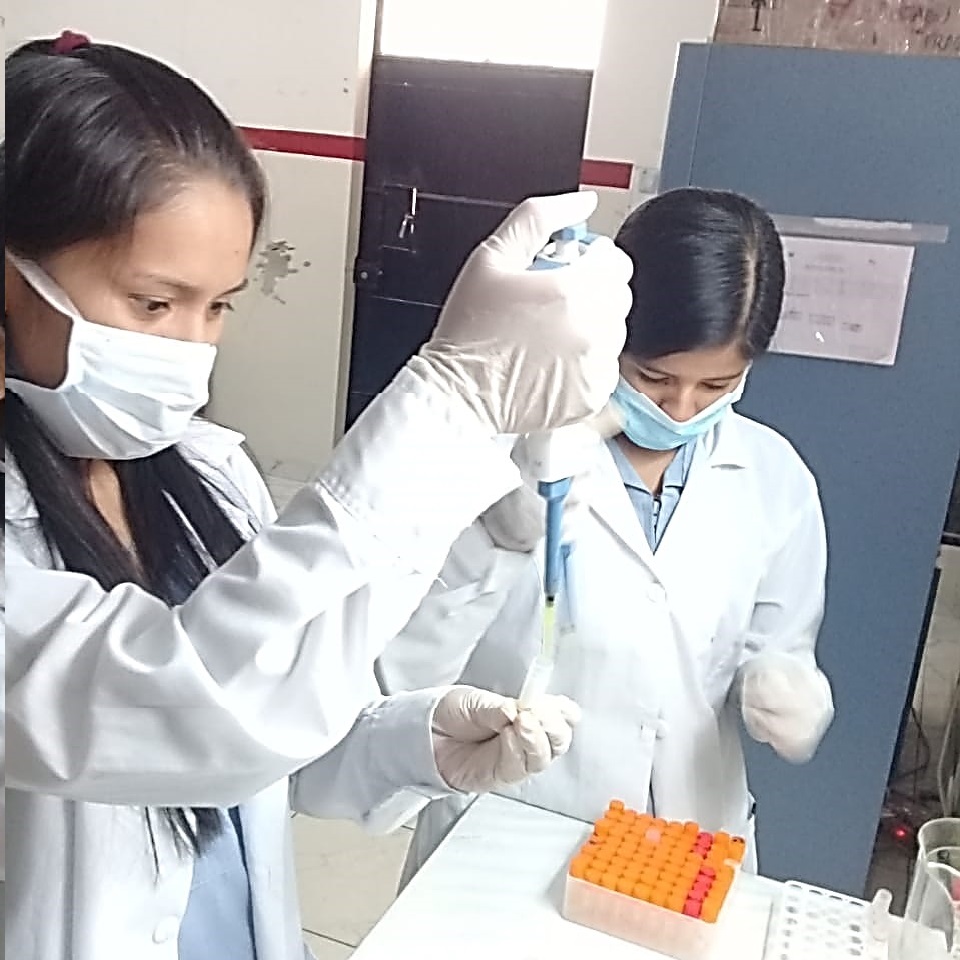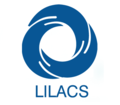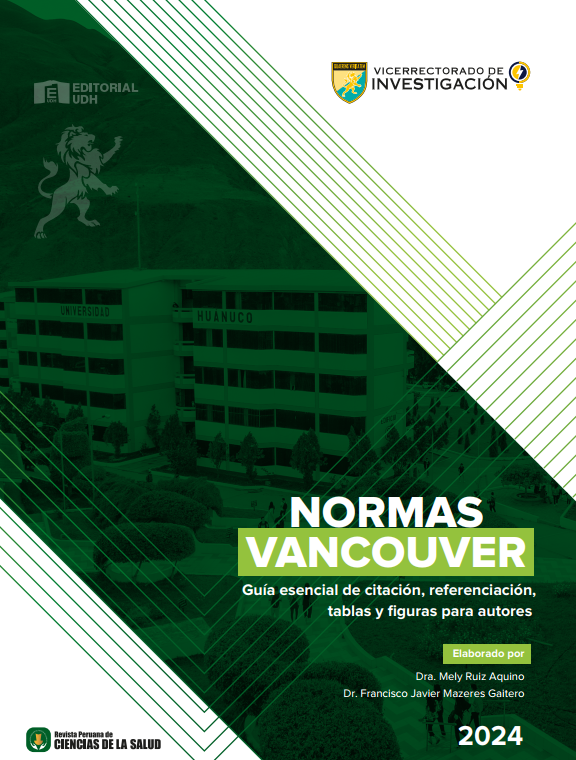Seroprevalence of dengue infection and associated factors in residents of Fila Alta village
DOI:
https://doi.org/10.37711/rpcs.2021.3.2.312Keywords:
dengue, seroepidemiological studies, enzyme-linked immunosor-bent assay, predisposing factorsAbstract
Objective. The objectives of the study were to determine the seroprevalence of dengue infection and to identify the associated factors in the residents of the Fila Alta village, district of Jaén, department of Cajamarca, during the months of September to December 2019. Methods. Observational, cross-sectional, prospective study with a non-experimental design with a descriptive-correlational approach. The sample consisted of 172 inhabitants of both genders and the sampling was simple random. The seroprevalence of IgG antibodies was determined by indirect enzyme-linked immunosorbent assay (ELISA) and a structured survey was applied to identify the factors associated with dengue. Likewise, the chi-square test was used to establish the relationship between the variables studied. Results. IgG antibodies to dengue fever were present in 19.2% of the population, being more frequent in women (12.2%). Dengue seropositivity was found in 9.3% (OR: 0.18; PR: 0.16; 95%CI: 0.09-0.23) of students and 5.8% (OR: 0.31 PR: 0.24; 95%CI: 0.11-0.37) of housewives. In addition, 15.7% (OR: 0.28; PR: 0.22; 95% CI: 0.15-0.29) of seropositive villagers obtained their water supply from tanks and the most common material used in the construction of their houses was adobe (8.7%; OR: 0.94; PR: 0.48; 95% CI: 0.30-0.66). Conclusions. The seroprevalence of dengue infection is high and is significantly related to the occupation of the inhabitants and the material of the walls of their houses.
Downloads
References
1. Pereyra Y, Samudio M, Ojeda A, Cabello Á. Seroprevalencia de la infección por dengue en el distrito de ChacoParaguayo. Estudio Poblacional. Rev Chil Infectol. [Internet] 2015 Dic; 32(6): 618-27 [Consultado 2020 Dic20]. Disponible en: http://dx.doi.org/10.4067/S0716-10182015000700002
2. Dengue y dengue grave [Internet] Ginebra: Organización Mundial de la Salud; 2020 [Consultado 2021 Feb20]Disponible en: https://www.who.int/es/news-room/fact-sheets/detail/dengue-and-severe-dengue
3. Frantchez V, Fornelli R, Sartori G, Arteta Z, Cabrera S, Sosa L, et al. Dengue en adultos: diagnóstico, tratamiento yabordaje de situaciones especiales. Rev. Méd. Urug. [Internet] 2016 Abr; 32(1): 43-51 [Consultado 2021 Feb 18]Disponible en: http://www.scielo.edu.uy/scielo.php?script=sci_arttext&pid=S1688-03902016000100006&lng=es
4.World Health Organization (WHO). Global strategy fordengue prevention and control 2012-2020. Geneva:WHO; 2012.
5. Dengue [Internet]. Perú: Organización mundial de lasalud; 2020 [Consultado 2021 Feb 20] Disponible en: https://www.paho.org/per/index.php?option=com_content&view=article&id=4079:dengue&Itemid=0#:~:-text=En%20el%20Per%C3%BA%2C%20durante%20el,fue%20de%200%2C12%25
6. Reyes A, Guzmán MG, Ramírez R, Hernández C, GarcíaG, Torres DM, et al. Impacto económico del dengue enpacientes y familiares. Rev Cuba Med Tropical [Internet]2019 Jun; 71(3):1-19 [Consultado 2021 Mar 18 Mar] Dis-ponible en: http://revmedtropical.sld.cu/index.php/me-dtropical/article/view/419
7. Luna H, Gómez G, Cando Wilson C. Factores epidemiológicos asociados a dengue en pacientes adultos. Revista Científica Mundo de la Investigación y el Conocimiento[Internet] 2018 Jun; 2 (2): 700-709 [Consultado 2021 Mar 18]Disponible en: http://dx.doi.org/10.26820/recimun-do/2.(2).2018.700-709
8. Villa LP. Factores de riesgo asociados al dengue. Rev.enferm. vanguard. [Internet] 2017 Ene; 5(1): 1-2 [Consultado 2021 Mar 18]. Disponible en: https://doi.org/10.35563/revan.v5i1.221
9. Arredondo-García JL, Méndez-Herrera A, Medina-CortinaH. Arbovirus en Latinoamérica. Acta pediátrica de México[Internet] 2016 Mar; 37(2): 111-131 [Consultado 2021 Feb] Disponible en: http://www.scielo.org.mx/scielo.php?script=sci_arttext&pid=S018623912016000200111&ln-g=es&tlng=es
10. Blacksell SD, Newton PN, Bell D, Kelley J, Mammen MP,Vaughn DW, et al. The comparative accuracy of 8 commercial rapid immunochromatographic assays for thediagnosis of acute dengue virus infection. Clin Infect Dis. [Internet] 2006 Abr; 42(8):1127-34 [Consultado 2021 Feb 20] Disponible en: https://doi.org/10.1086/501358
11. Niño S, Yong A. Conocimientos y prácticas en prevención de dengue post fenómeno del niño costero. Tumán - Chiclayo, 2018 [Tesis de grado]. Lambayeque: Universidad nacional Pedro Ruiz Gallo; 2018.
12. Vircell Microbiologists. Dengue ELISA IgG - Productopara diagnóstico in vitro [Internet] [Consultado 2019Sep 20] Disponible en: https://www.vircell.com/media/INSERTS/DENGUE%20ELISA%20IgG_G1018_ES.pdf
13. Velandia ML, Castellanos JE. Virus del dengue: estructura y ciclo viral. Infectio. [Internet] 2011 Feb; 15: 33-43[Consultado 2021 Mar 15] Disponible en: http://dx.doi.org/10.1016/S0123-9392(11)70074-1
14. Neira M. Factores de riesgo asociados a infección pordengue en familias del centro poblado Río Seco, El Porvenir, Trujillo, La Libertad, 2017 [Tesis de licenciatura enEnfermería] La Libertad: Universidad Cesar Vallejo; 2018.
15. Molineros LF, Pinzón Gómez EM, Rengifo García NE,Daza CF, Hernández-Carrillo M, Ortiz ME, et al. Seroprevalencia de dengue en municipios con transmisión hiperendémica y mesoendémica, Valle del Cauca, Colombia. Rev Cubana Salud Pública[Internet] 2020 Abr; 46(2): 1-20 [Consultado 2021 Mar 2] Disponible en: http://www.revsaludpublica.sld.cu/index.php/spu/article/view/1256
16. Cabezas C, Fiestas V, García-Mendoza M, Palomino M, Mamani E, Donaires F. Dengue en el Perú: a un cuartode siglo de su reemergencia. Rev Peru Med Exp SaludPublica. 2015; 32(1):146-56.
17. Gutiérrez C, Montenegro J. Conocimiento sobre dengue en una región endémica de Perú. Estudio de basepoblacional. Acta Médica Peruana [Internet] 2017 Oct;34(4): 283-288 [Consultado 2021 Mar 2] Disponible en:http://www.scielo.org.pe/scielo.php?script=sci_arttex-t&pid=S1728-59172017000400005&lng=es
18. Caraballo A, Chica I, Ocampo M. Comportamiento epidemiológico del Dengue, Chikungunya y Zika. Córdova-Colombia. Rev. Colombiana Salud Libre [Internet]2017 Dic; 12(2): 7-14 [Consultado 2021 Mar 2] Dispo-nible en: https://doi.org/10.18041/1900-7841/rcsli-bre.2017v12n2.1725
19. Castañeda-Porras O, Segura O, Garon-Lara E, Manosalva-Sánchez C. Conocimientos, actitudes y prácticas frente al control del vector Aedes aegypti, Villanueva. Casanare, Colombia. Rev. Médica de Risaralda[Internet] 2017 Dic; 23(2): 14-22 [Consultado 2021 Mar 2] Disponible en: http://www.scielo.org.co/scielo.php?script=sci_arttext&pid=S0122-06672017000200003&lng=en
20. Chilon S. Factores de riesgo asociados al brote epidémico de Dengue en el Centro Poblado Menor El Salitre - Cajamarca 2017 [Tesis de maestría en Ciencias] Cajamarca: Universidad Nacional de Cajamarca; 2018.
21. Céspedes LM, Mendoza G, Díez M. Caso inusual dedengue. Rev. bol. ped [Internet] 2012 Abr; 51(1): 15-18[Consultado 2021 Mar 10] Disponible en: http://www.scielo.org.bo/scielo.php?script=sci_arttext&pid=S1024-06752012000100004&lng=es
22.Mariné M, García M, Torres Y, Vásquez M. Comparaciónde datos de la vigilancia ambiental y de grupos vecinales para prevenir el dengue. Rev Cubana Hig. Epidemiol.[Internet] 2007 Abr; 45(1): 28-59 [Consultado 2021 Mar10] Disponible en: http://scielo.sld.cu/scielo.php?script=sci_arttext&pid=S1561-30032007000100008&lng=es
23. Marinho RA, Beserra EB, Bezerra-Gusmão MA, Porto V de S, Olinda RA, dos Santos CAC. Effects of temperature on thelife cycle, expansion, and dispersion of Aedes aegypti (Diptera: Culicidae) in three cities in Paraiba, Brazil. J Vector Ecol. [Internet] 2016 Jun; 41(1): 1-10 [Consultado 2021 Mar 15]Disponible en: https://doi.org/10.1111 / jvec.12187
24. Nagua C. Dengue en personas de 20-30 años de edadque acuden al sub centro de salud Venezuela del Cantón Machala del mes de enero a julio del año 2012 [Tesis depregrado en Enfermería] Ecuador: Universidad Técnicade Machala; 2014.
25. Agüero-Vega A, Ramos-Pando W. Asociación entre loscasos de dengue con las características de la vivienda yconocimiento sobre la enfermedad. Rev Peru Investig Salud [Internet] 2018 Dic; 2(2): 24-29 [Consultado 2021 Mar15] Disponible en: https://doi.org/10.35839/repis.2.2.221

Downloads
Published
Issue
Section
License
Copyright (c) 2021 Aydee Facundo, Gabriela Sánchez, Christian Rivera-Salazar, Cinthya Santa Cruz-López

This work is licensed under a Creative Commons Attribution 4.0 International License.





















